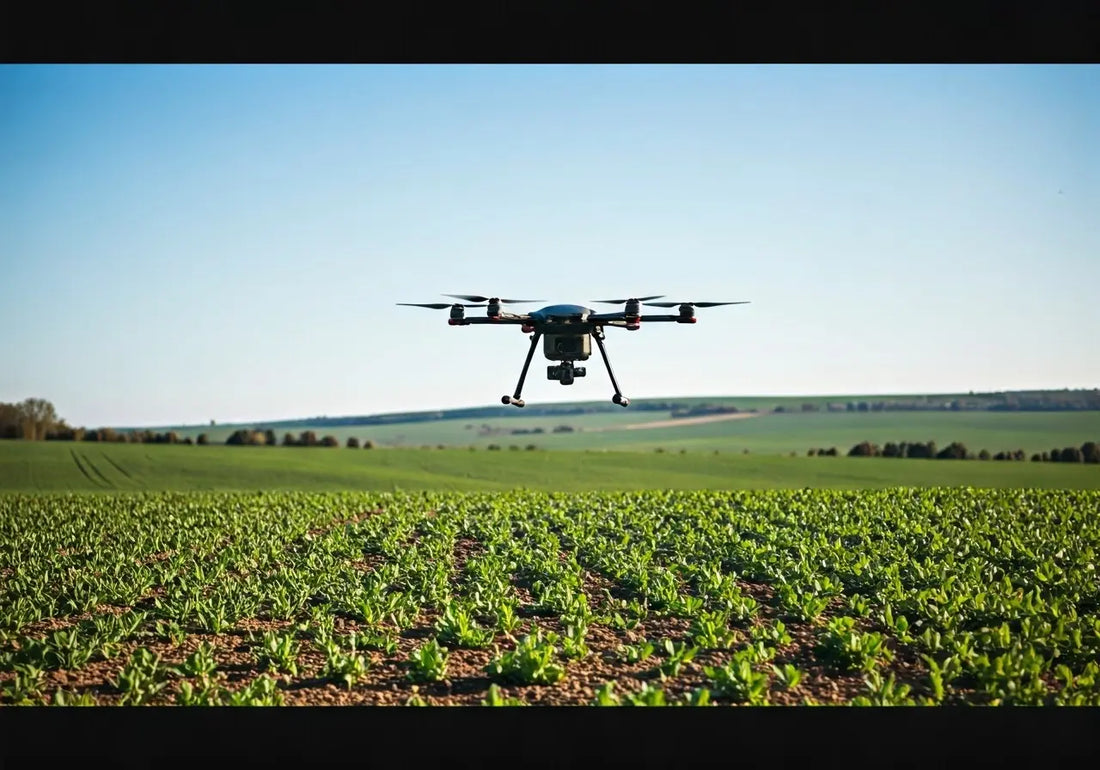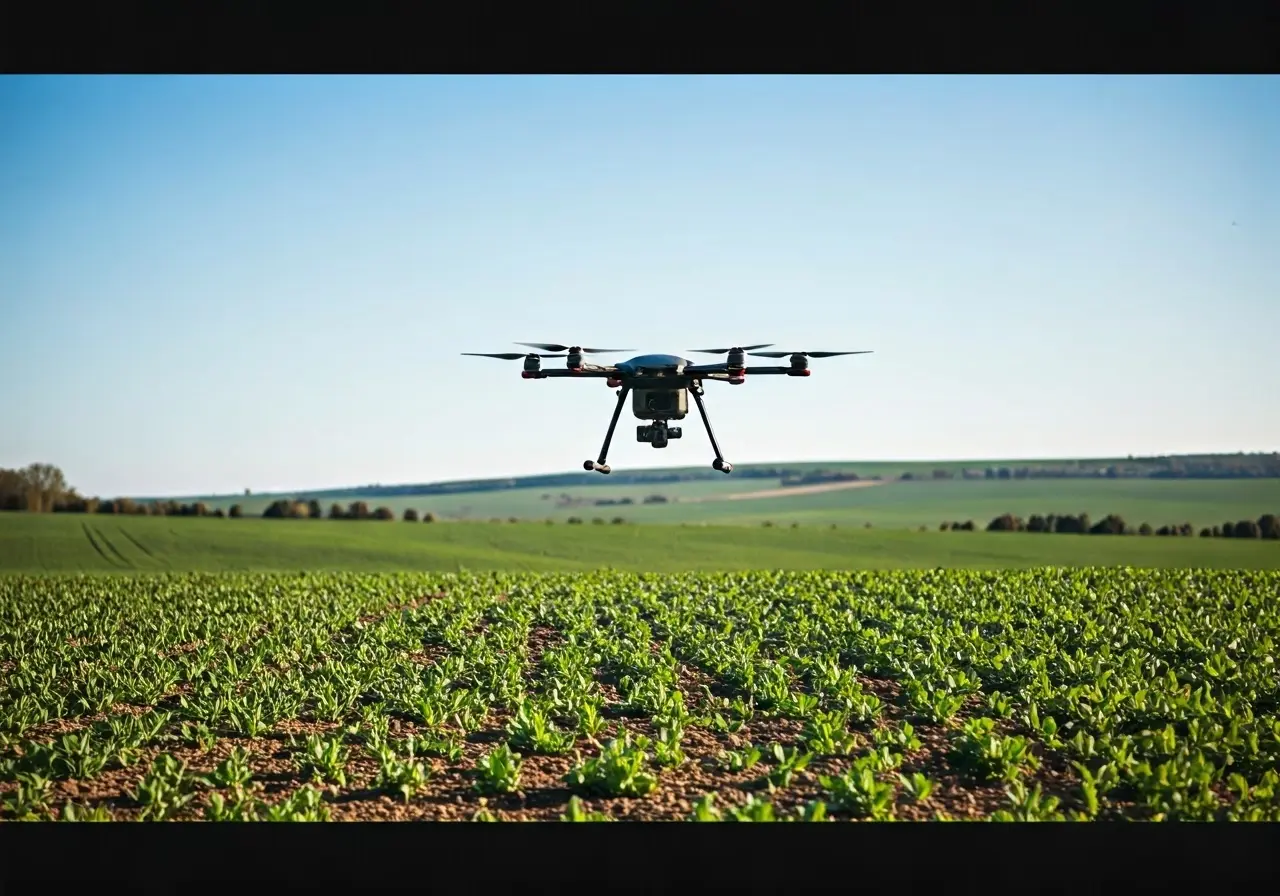
10 Ways Drone Spreaders Revolutionize Farming Practices
Share
In recent years, agriculture has witnessed a significant transformation with the integration of technology. Among the advancements, drone spreaders have emerged as a game-changer, making farming more efficient, precise, and sustainable. In this listicle, we explore how these innovative tools are reshaping farming practices, offering numerous benefits to farmers worldwide.
1. Precision in Crop Spraying
Drone spreaders offer unparalleled precision in applying fertilizers and pesticides, ensuring that only the targeted areas receive treatment, minimizing waste, and promoting healthier crop growth. The technology behind these drones allows for exact measurements and controlled spraying, virtually eliminating the trial-and-error approach previously used in traditional methods. Not only does this improve the efficacy of the application, but it also protects the surrounding ecosystems from potential chemical overflow, keeping farm runoffs and neighboring habitats cleaner.
Moreover, the GPS technology embedded in these drones ensures coverage uniformity and optimal dispersal of agricultural inputs, which is crucial for crops requiring precise nutrient and pesticide delivery. This level of accuracy not only boosts plant health but also results in higher quality yields, ultimately contributing to more sustainable farming operations and lessening the environmental impact. Farmers can customize the recipes for their fields based on real-time data gathered from previous visits, adjusting for variations in soil type and existing plant health.
2. Time Efficiency and Quick Deployment
Farmers can quickly deploy drone spreaders across large expanses of farmland, significantly reducing the time needed for traditional manual or machine-based spreading methods. Where a tractor might take hours to cover an acre, a drone can complete the task in a fraction of the time, regardless of the terrain complexity. This speed means that there’s less disruption to the natural growth cycle of the crops, as crucial treatments can be applied at precisely the right moment.
Immediate deployment is another key benefit, allowing farmers to respond swiftly to emerging threats, such as sudden pest infestations or unexpected weather changes. The swiftness of response facilitated by drone technology is paramount in preventing significant loss and ensuring that the crops are maintained in peak condition throughout the growing season. As a result, farmers have more flexibility in their operations, which can be particularly advantageous during critical periods of the agricultural calendar.
3. Cost-Effective Solutions
By reducing labor costs and minimizing resource wastage, drone spreaders provide a cost-effective solution for farmers looking to maximize profitability without sacrificing quality. The initial investment in drone technology might seem daunting at first, but the long-term savings on labor and resources make it a financially viable option. Drone spreaders eliminate the need for extensive manual labor, which is typically one of the largest expenses in farming operations.
The precision application ensures that every drop of fertilizer or pesticide is used effectively, reducing overall consumption and cost. This waste reduction strategy not only saves money but also aligns with environmental goals, creating a more sustainable business model. Moreover, the data-rich insights provide a better understanding of the resource needs, preventing overapplication and thus saving on the costs of materials in the long run.
4. Enhanced Crop Monitoring
Equipped with advanced sensors, drone spreaders offer farmers the ability to monitor crop health in real-time, enabling prompt action to address any issues and boost plant vitality. These sensors can detect a range of variables from plant color, indicative of nutrient deficiencies or disease, to moisture levels in the soil, which are crucial for maintaining optimal growth conditions.
Monitoring with drones provides an expansive overview that is difficult to obtain through ground-based methods. The rapid scanning ability of drones means that entire fields can be assessed regularly, giving farmers ongoing insights into crop conditions. This information is invaluable for proactive decision-making, ensuring that interventions are timely and appropriate, thus protecting yields and securing farmer livelihoods.
5. Sustainable Farming Practices
Drones use less fuel and create fewer emissions than traditional farm equipment, aligning with sustainable farming goals and reducing the carbon footprint of agricultural operations. As agricultural industries worldwide strive to meet stringent emission targets, the adoption of drone technology is a significant step in the right direction. The lighter weight and efficient energy use of drones compared to conventional machinery make them ideal for farms aiming to reduce their environmental impact.
6. Access to Hard-to-Reach Areas
Drone spreaders can easily access difficult terrains such as steep hillsides or waterlogged areas, ensuring comprehensive coverage where conventional machinery might struggle. This capability is transformative for farms located in challenging geographical areas, where conventional equipment might not only be inefficient but also cause soil compaction and damage.
7. Data-Driven Decision Making
With the data collected from drone sensors, farmers can make informed decisions on crop management, optimize inputs, and improve overall farm productivity. The integration of precise data means that farmers no longer have to rely solely on experience or guesswork to manage their crops. Instead, decisions are backed by tangible insights and analytics, which can significantly enhance crop performance.
8. Flexibility in Usage
Drones can be used for a variety of functions beyond spreading, such as planting and surveying, making them a versatile tool in the farmer’s arsenal. This versatility allows farmers to invest in one piece of equipment that can fulfill multiple roles, maximizing the return on investment. Whether it’s seeding a new crop, scanning for pests, or assessing soil health, drones adapt to a wide range of applications, offering substantial value in a single platform.
9. Improving Crop Yield
By ensuring precise application and comprehensive monitoring, drone spreaders contribute to higher crop yields and better quality produce. This translates into tangible benefits for farmers in terms of both profitability and productivity, providing them with the tools needed to keep up with growing demand and competitive markets.
10. Fostering Agricultural Innovation
The integration of drones paves the way for continued innovation in agriculture, inspiring new methods and technologies to further enhance farming practices. As the agricultural sector continues to evolve, drones serve both as a catalyst and a symbol of technological progress, encouraging the exploration of new possibilities in efficiency and sustainability.

